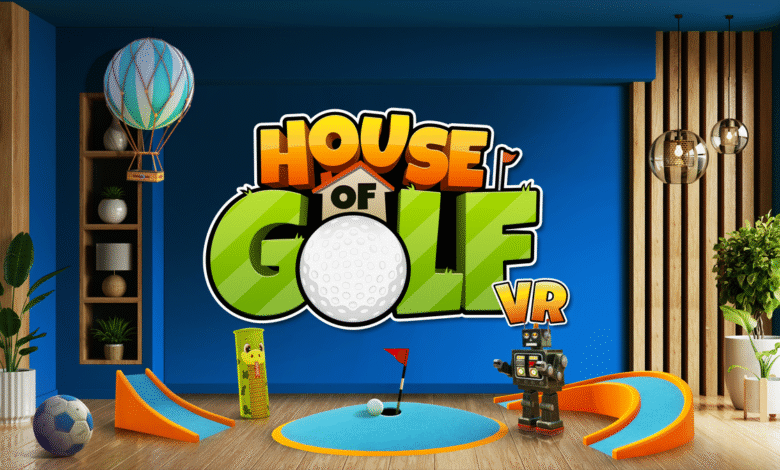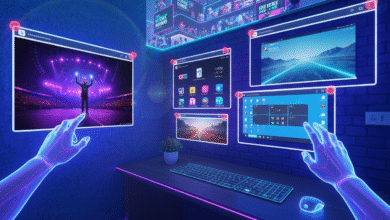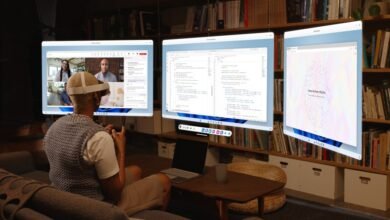House of Golf VR: Master The Course From Home

▼ Summary
– House of Golf offers a mixed reality mini-golf experience where players can design custom courses using real-world home environments as obstacles.
– The game’s course creation is imaginative but finicky, lacking features like magnetic snapping and producing unpredictable ball collisions.
– Designing and playtesting courses is tedious and time-consuming, often making the creator lose interest by the time the course is ready to play.
– In VR Mode, the curated courses are wacky but suffer from inferior mechanics like slow teleportation and less reliable ball physics compared to competitors like Walkabout Mini Golf.
– The game is recommended for enthusiasts of creative building or mixed reality experiences but isn’t yet a replacement for established VR mini-golf titles.
House of Golf VR invites players to master the art of putting without ever stepping outside, transforming familiar home spaces into personalized miniature golf courses. This mixed reality experience promises to turn your living room or kitchen into a challenging green, though the execution sometimes falls short of its imaginative premise.
The idea of crafting a custom mini golf hole that weaves through the everyday landscape of your home holds undeniable appeal. Imagine designing a shot that caroms off every wall in the kitchen, navigates a tricky path around the dining table, or launches from a ramp into the family dog’s bed. After several hours of tinkering, you can assemble a functional course, perhaps even enhancing your table layout with a series of toy construction cranes for added complexity.
However, the actual process of building these courses proves far more cumbersome than the initial creative burst. While dreaming up wild concepts is easy, translating them into a smoothly functioning layout feels less like snapping together Lego bricks and more like wrestling with unpredictable physics. The lack of a magnetic snap-to-grid system for placing objects means pieces rarely align perfectly, and ball collisions often yield frustratingly random results.
One ambitious plan for a billiards-inspired kitchen hole had to be abandoned entirely. To utilize an entire apartment’s floor plan, you must disable the headset’s standard room-scale boundary. Doing so comes with a significant trade-off: the game can no longer recognize or interact with your real-world walls and furniture. Sacrificing the kitchen’s automatic boundaries became necessary to avoid the tedious manual task of placing virtual barriers along every wall in the living and dining areas.
Refining a course demands extensive playtesting, which can be as tedious as it is enjoyable. Perfecting a single element, like the ramp into the dog bed, requires painstaking adjustments to launch angles and distances. The time spent building elaborate scaffolding and barriers to contain errant shots often far exceeds the time invested in the initial creative concept.
A more fundamental issue emerges from this process. While designing a course is engaging and solving its spatial puzzles is deeply satisfying, you can grow weary of it by the time it’s ready to play. Having already uncovered every trick and optimal path during testing, the finished course holds few surprises for its creator.
The potential for multiplayer with shared object permanence could dramatically elevate the experience. The joy of VR often lies in sharing a fantastical world layered over reality with a friend. Inviting someone to putt through your home, where ordinary objects become hilarious obstacles, sounds immensely fun. Yet, the same problem persists, you would always hold an unfair advantage on any course you designed and tested yourself.
When evaluated against the established champion of the genre, Walkabout Mini Golf, House of Golf struggles to compete on pre-designed courses. Its VR Mode features a series of themed, six-hole courses unlocked by achieving par or better. These holes are certainly whimsical, employing physics and features impossible in real life.
Nevertheless, the shortcomings become apparent after just a few holes. Walkabout Mini Golf includes a magical instant-teleport function that seamlessly places you right where you need to be for your next shot. House of Golf has a similar button, but it suffers from a noticeable loading delay and inferior accuracy, often forcing you to rely on a slower, aim-and-click teleportation method common in other VR titles.
Confidence in the ball physics is lower than desired. A mulligan button offers some relief, but it remains frustratingly easy to land a shot out of bounds, ruining your progress toward the tournament trophies required to unlock the full selection of curated courses and custom balls.
The pre-built courses themselves lack the cohesive charm and magical atmosphere found in other VR worlds. You frequently find yourself placed in generic, uninspired settings like a basic living room or garage replica. For its VR Mode to truly shine and encourage players to improve their scores, the creative quality needs a significant upgrade.
So, is it worth teeing off? If you have a passion for Rube Goldberg-style contraptions or enjoy constructing elaborate, house-spanning tracks, House of Golf will likely capture your interest. For collectors building a diverse library of mixed reality experiences, it represents a worthy addition. Dedicated fans of Walkabout Mini Golf who have exhausted its content may view this as an intriguing indie expansion for their collection. Just don’t expect it to dethrone the current leader, at least not in its present form. House of Golf VR is currently available on the Meta Quest platform.
(Source: Upload VR)





